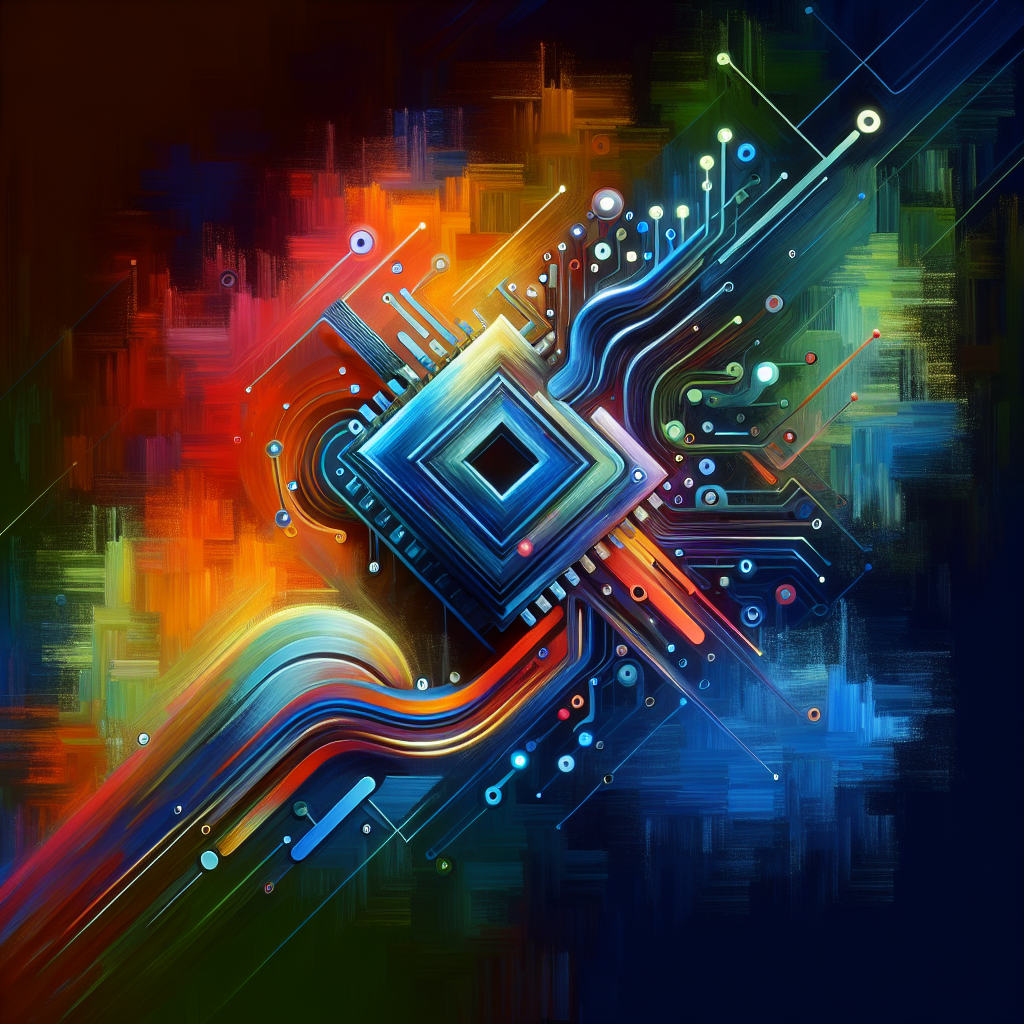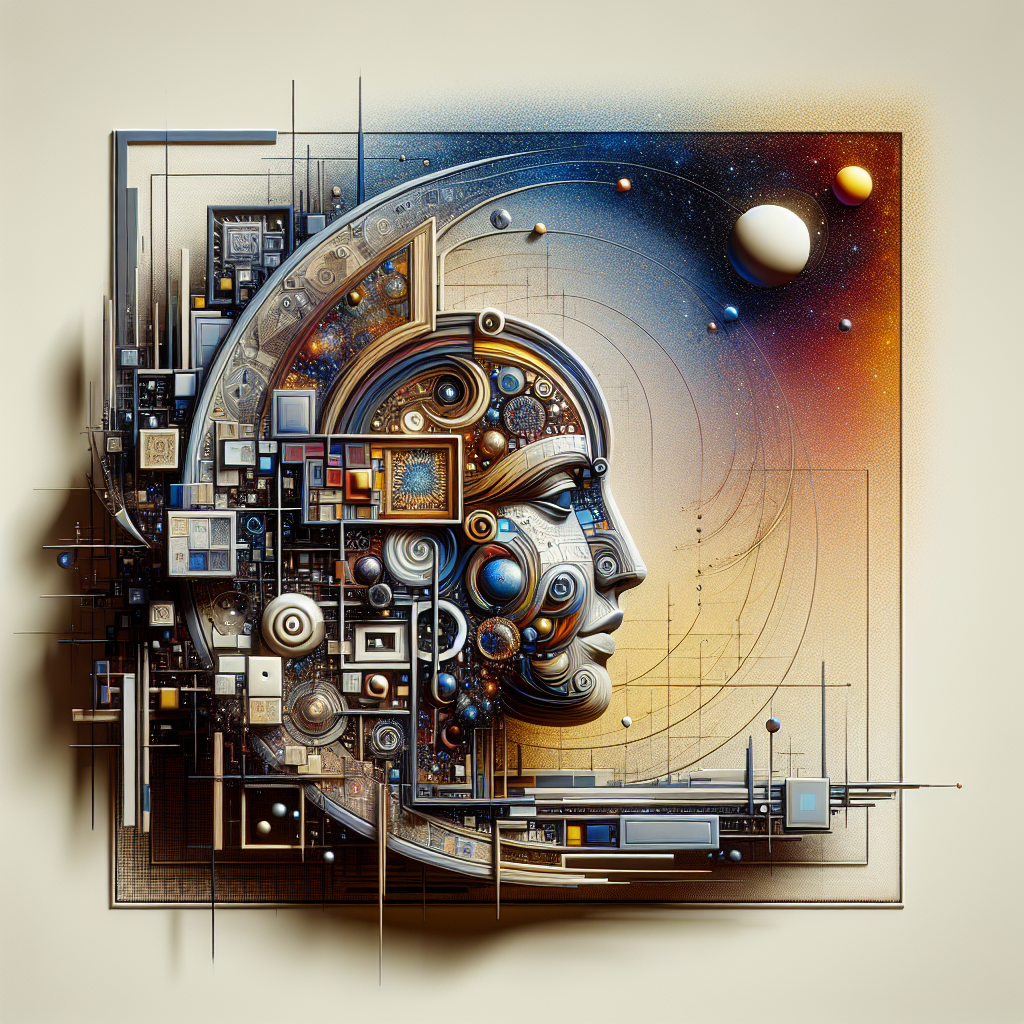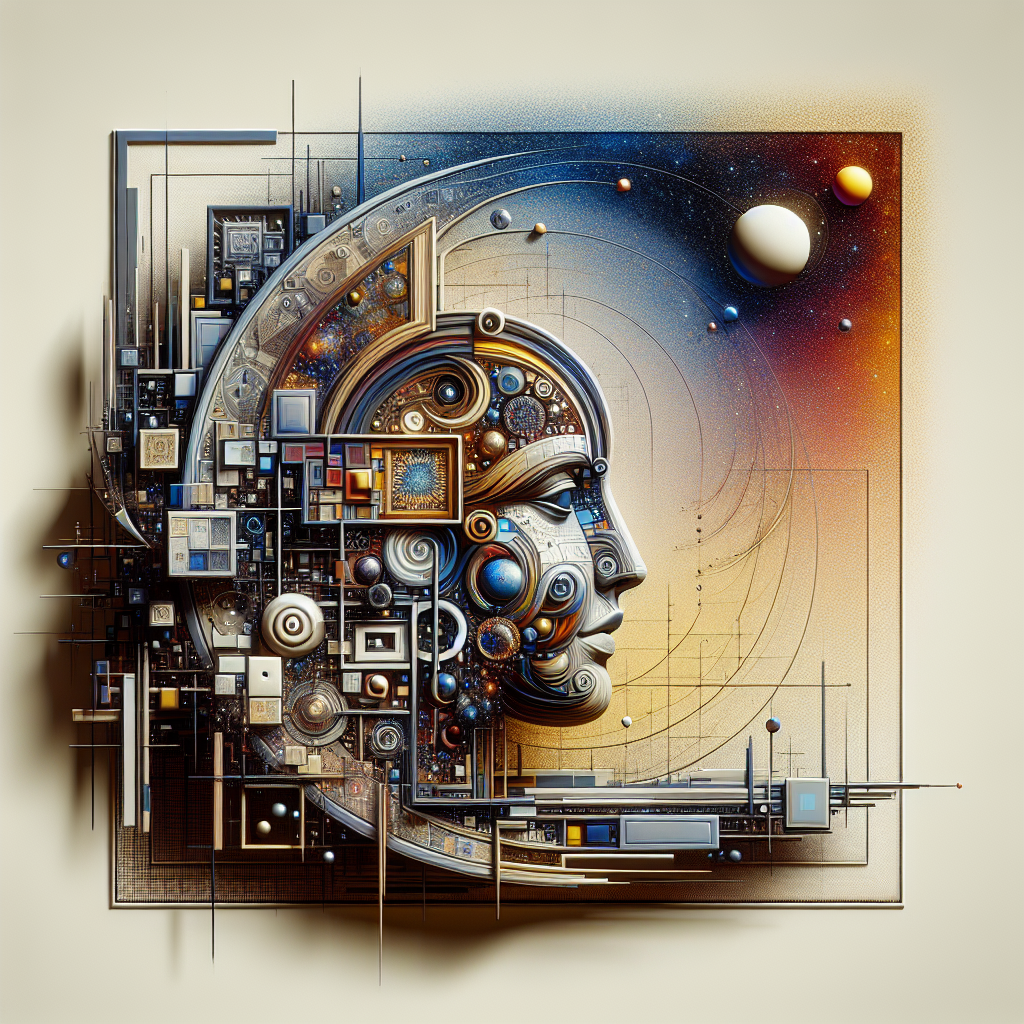Imagine a world where creativity and innovation merge effortlessly with the precision and logic of technology. In this realm, machines not only assist us in our daily lives but also become masters at the art of creation. The question at hand is no longer whether artificial intelligence (AI) can create art, but rather, how adeptly it can do so. Can AI truly tap into the depths of imagination, breathe life into stunning masterpieces, and evoke emotions in the hearts of its viewers? Let’s explore the fascinating intersection of art and AI, and uncover the boundless possibilities that arise when these two worlds collide.

Introduction
Artificial intelligence (AI) is a fascinating concept that has been gaining traction in many fields, including the realm of art. But what exactly is AI, and how does it relate to the concept of art?
Defining AI
AI refers to the ability of a machine or computer system to perform tasks that would typically require human intelligence. It involves the development of algorithms and models that enable machines to learn, reason, and make decisions. AI can be classified into two categories: narrow AI, which is designed to perform specific tasks, and general AI, which aims to replicate human intelligence in a broad range of activities.
The Concept of Art
Art, on the other hand, is a form of expression that encompasses a wide range of mediums, techniques, and ideas. It is a means for individuals to communicate their thoughts, emotions, and experiences through visual, auditory, or written forms. From painting and sculpture to music and literature, art has played a significant role in human culture for centuries.
Exploring AI in Art
The intersection of AI and art opens up a world of possibilities. AI can be involved in the creation of art directly, as a creative tool for artists, or as a means to enhance traditional art forms.
AI-Generated Art
AI has the ability to generate art entirely on its own. Through machine learning algorithms, computers can analyze vast amounts of data and produce new, original artworks. This approach to art creation challenges traditional notions of authorship and raises questions about the role of AI in the artistic process.
AI as a Creative Tool
AI can also serve as a powerful tool for artists to explore new techniques, styles, and ideas. With AI, artists can experiment with different algorithms and models to generate unique and innovative artworks. This collaboration between human creativity and machine intelligence can lead to exciting breakthroughs in the art world.
AI-Enhanced Art
AI can enhance traditional art forms by offering new perspectives and approaches. For example, artists can use AI algorithms to analyze existing artworks and generate recommendations for color palettes or composition. This can help artists expand their artistic horizons and push the boundaries of their creativity.
AI’s Impact on the Artistic Process
The introduction of AI into the artistic process has both advantages and challenges. AI algorithms can analyze vast amounts of data, which can accelerate the research and ideation phase for artists. AI can also offer valuable insights and suggestions, helping artists refine their artistic vision and make informed decisions.
However, AI’s involvement in the artistic process raises questions about the authenticity and originality of the artwork. It also challenges the traditional idea of human expression in art and raises ethical considerations about the use of AI in creative fields.
Benefits of AI in Art
The integration of AI in art brings several benefits to artists, the art world, and audiences alike.
Unleashing Creativity
AI enables artists to explore new possibilities and break free from traditional constraints. By leveraging AI algorithms, artists can generate novel ideas, experiment with different styles and techniques, and take their art in new and exciting directions.
Pushing Boundaries
AI has the potential to push the boundaries of what is considered possible in art. By combining the unique capabilities of AI with human creativity, artists can create artworks that challenge conventional norms, challenge perceptions, and inspire new ways of thinking.
Efficiency and Accessibility
AI can streamline the artistic process, making it more efficient and accessible. Through automation and advanced algorithms, artists can save time on repetitive tasks, allowing them to focus on the creative aspects of their work. Additionally, AI-powered tools and platforms can make art more accessible to a wider audience, democratizing the art world.
Challenges and Controversies
While AI offers exciting possibilities, its integration into the art world also presents challenges and controversies.
Authenticity and Originality
One of the main concerns surrounding AI-generated art is the question of authenticity and originality. How can AI-generated artwork be considered authentic if it is created by a machine? Can machines truly express unique artistic visions, or are they simply replicating existing patterns and styles?
Human vs. AI Expression
The introduction of AI in art raises questions about the role of human expression. Can AI truly capture the depth and complexity of human emotions and experiences? Or does it merely replicate patterns and algorithms? The inclusion of AI in art blurs the lines between human creativity and machine-generated output.
Loss of Human Touch
The use of AI in art also brings up concerns about the loss of the human touch. Art has traditionally been seen as an expression of human emotion, skill, and craftsmanship. With AI taking on a more prominent role in art creation, some fear that the essence of art, rooted in human connection, could be diminished.
Ethical Considerations
The ethical implications of AI in art are significant. Questions arise about the ownership, authorship, and intellectual property rights of AI-generated artworks. Additionally, there are concerns about the potential for bias or discrimination in AI algorithms, as these systems are trained on existing data sets that may be flawed or influenced by societal biases.

AI Techniques in Art Creation
Several AI techniques play a vital role in the creation of art.
Generative Adversarial Networks (GANs)
GANs are a type of AI architecture that consists of two neural networks: a generator network and a discriminator network. The generator network is responsible for creating new art pieces, while the discriminator network evaluates the generated artworks and provides feedback. Through an iterative process, GANs can generate increasingly realistic and high-quality art.
Deep Learning Algorithms
Deep learning algorithms, particularly convolutional neural networks (CNNs), have been instrumental in image recognition and analysis. By training CNNs on vast amounts of visual data, AI algorithms can learn to recognize and generate images that mimic certain styles or elements present in the training data.
Natural Language Processing (NLP)
NLP techniques enable AI systems to understand and generate human language. AI algorithms can analyze text and generate descriptive or interpretive narratives about artworks. They can also generate poetry or prose based on certain prompts or themes, blurring the lines between human and machine-generated writing.
Computer Vision
Computer vision techniques allow AI systems to analyze and interpret visual content. By leveraging computer vision algorithms, AI can analyze artworks, identify patterns, and extract meaningful features. This can assist artists in the creation and analysis of their work, providing valuable insights and inspiration.
Neural Style Transfer
Neural style transfer is a technique that combines the style of one image with the content of another. AI algorithms can analyze the stylistic elements of a reference image, such as brushstrokes or color palettes, and apply them to a target image or artwork. This technique allows for the creation of unique and visually striking compositions.
Examples of AI-Generated Artwork
Several notable examples demonstrate the capabilities of AI in generating art.
DeepDream by Google
DeepDream is an AI technique developed by Google that produces surreal and dreamlike images by enhancing patterns and features in existing images. It utilizes deep learning algorithms to analyze and modify images, resulting in visually stunning and psychedelic artwork.
The Painting Fool
The Painting Fool is an AI program developed by artist Simon Colton. It creates original paintings by generating patterns and compositions based on its training data. The program has been exhibited in galleries and museums, challenging traditional notions of what constitutes art and who can be considered an artist.
AARON
AARON is a computer program created by artist Harold Cohen. This AI program can autonomously create artworks using color, shape, and composition. AARON’s artworks have been featured in exhibitions and collections, showcasing the intersection of AI and the art world.
Mario Klingemann’s AI Art
Mario Klingemann is an artist known for his explorations of AI in the art world. He utilizes AI algorithms to generate unique and thought-provoking artworks. Klingemann’s use of AI challenges traditional artistic practices and opens up new possibilities for creative expression.
AI in Traditional Art Forms
AI is not limited to generating visual art. It has the potential to transform various traditional art forms.
Painting and Drawing
AI algorithms can analyze existing artworks and generate recommendations or suggestions for painters and drawers. By analyzing patterns, color palettes, and composition, AI can provide valuable input to artists, allowing them to experiment with new techniques and expand their creative horizons.
Sculpture and Installation
AI can assist sculptors and installation artists by providing insights and inspiration. Through computer vision techniques, AI algorithms can analyze images of existing sculptures or installations and generate recommendations or suggestions for artists to explore new forms, materials, or concepts.
Music and Compositions
AI can compose original music and generate compositions in various genres using algorithms and deep learning techniques. This can benefit musicians and composers by providing endless opportunities for experimentation and exploration, opening up new frontiers in musical creativity.
Poetry and Literature
With NLP techniques, AI algorithms can analyze existing texts and generate poetry or literature that mimics certain styles or themes. This can provide inspiration to writers, helping them explore new ideas or narrative structures, and challenging traditional notions of storytelling.
Film and Animation
AI’s impact on the film and animation industry is substantial. With AI algorithms, filmmakers and animators can enhance visual effects, automate tedious tasks, and generate realistic characters or environments. AI can also analyze existing films or animations, providing insights and recommendations to filmmakers, enhancing the storytelling process.
The Transformative Potential
The integration of AI in art has the potential to transform the way art is created, experienced, and appreciated.
Collaboration between Humans and AI
The collaboration between humans and AI can lead to exciting artistic breakthroughs. By combining human creativity and intuition with AI’s computational power and analytical capabilities, artists can create artworks that push the boundaries of their respective mediums and challenge traditional norms.
New Avenues for Artistic Expression
AI opens up new avenues for artistic expression, offering artists innovative tools, techniques, and possibilities. It allows artists to explore new styles, experiment with unconventional materials, and challenge established artistic conventions. AI also provides opportunities for interdisciplinary collaborations, where artists can collaborate with scientists, engineers, and technologists to create groundbreaking works of art.
Reimagining Artistic Boundaries
AI challenges traditional boundaries in art, blurring the lines between human creativity and machine-generated output. It prompts us to reconsider traditional notions of authorship, authenticity, and originality in art. AI also challenges our perceptions of what art is and what it can be, pushing us to expand our understanding and appreciation of artistic expression.
The Impact on Artists and the Art Market
The integration of AI in art has a significant impact on artists and the art market as a whole.
Artistic Challenge and Reinvention
AI challenges artists to reinterpret and reinvent their creative processes. It pushes artists to collaborate with AI systems and experiment with new techniques, challenging traditional notions of artistic creation. This can lead to personal growth and artistic evolution, as artists embrace the opportunities that AI offers.
Changing Perceptions of AI-generated Art
The acceptance and perception of AI-generated art are evolving. Initially met with skepticism and resistance, AI-generated art is now gaining recognition and appreciation in the art world. Galleries and museums are showcasing AI-generated artworks, and collectors are acquiring these pieces. The increasing acceptance of AI-generated art reflects a growing understanding of AI’s potential as a tool for artistic expression.
Economic Implications
The integration of AI in art also has economic implications. AI-powered tools and platforms are making art more accessible to a wider audience. Artists can leverage AI algorithms to reach new markets, connect with potential buyers, and monetize their art more effectively. Additionally, the demand for AI-generated art is growing, which presents new opportunities for artists and entrepreneurs in the art market.
The Future of AI in Art
As AI technology advances and artistic practices continue to evolve, the future of AI in art holds great promise.
Advancements in AI Technology
Advancements in AI technology will continue to shape the art world. As AI algorithms become more sophisticated, they will offer artists new tools and capabilities for artistic expression. AI-powered systems will become more intelligent, enabling enhanced collaborations between humans and machines.
Evolution of Artistic Practices
The integration of AI will lead to the evolution of artistic practices. Artists will continue to explore and experiment with AI-powered tools and techniques, challenging traditional artistic conventions and pushing the boundaries of what is possible in art. The fusion of human creativity and AI will give rise to new artistic movements and styles.
Societal Acceptance and Integration
Societal acceptance and integration of AI in art will continue to grow. As AI-generated artworks gain recognition and appreciation, the perception of AI as a creative tool will become more widespread. AI’s role in the art world will continue to expand, fostering new collaborations, and generating novel artistic experiences that captivate audiences.
In conclusion, AI’s integration into the art world has the potential to unleash creativity, push boundaries, and enhance traditional art forms. While challenges and controversies exist, AI offers artists new tools, techniques, and perspectives to redefine artistic expression. With advancements in AI technology, evolving artistic practices, and increasing societal acceptance, the future of AI in art looks promising. The transformative potential of AI in art is not only reshaping the way art is created and experienced but also challenging our understanding of what art truly is.
